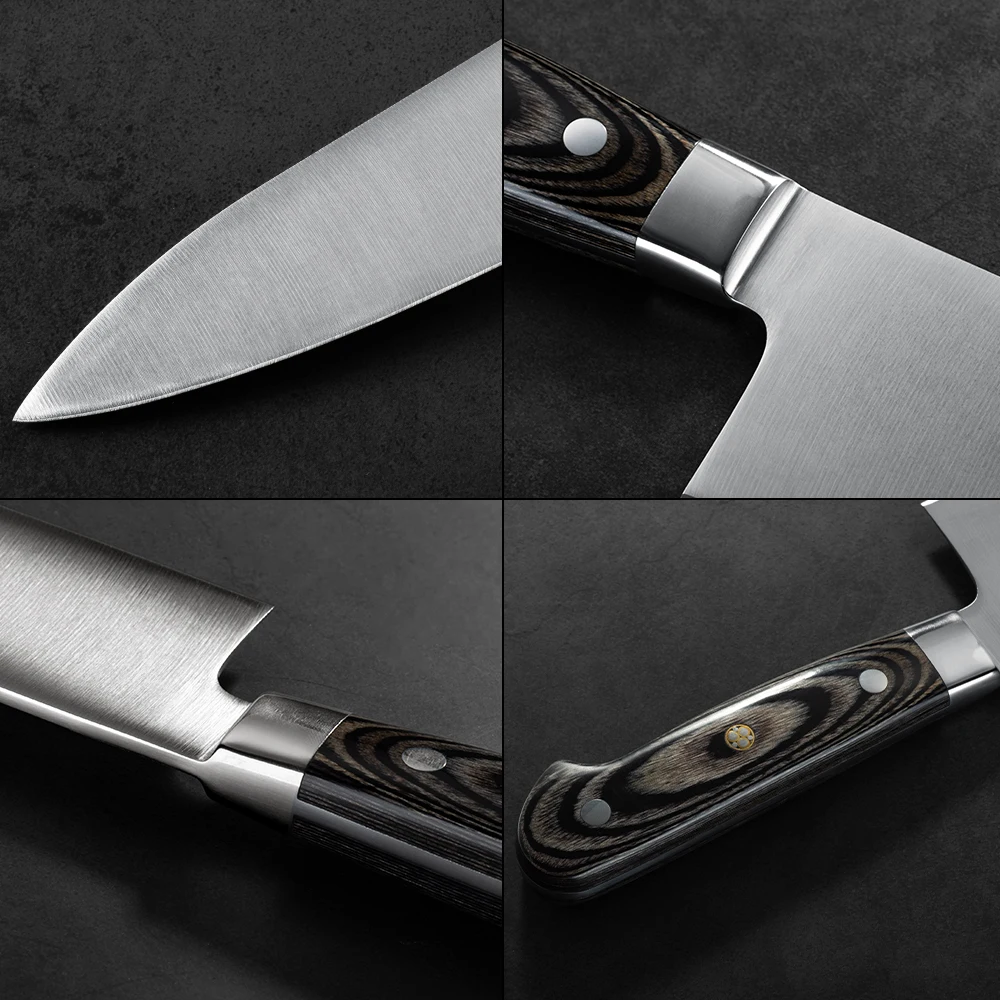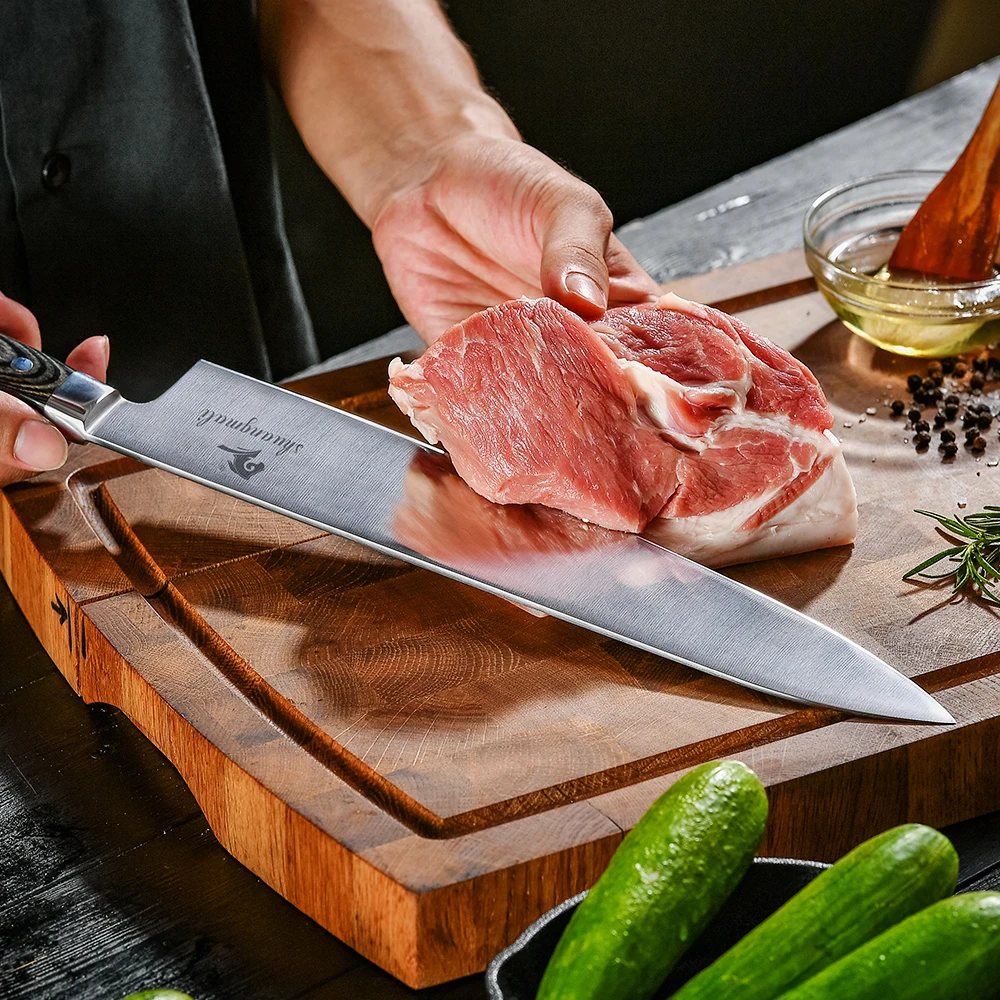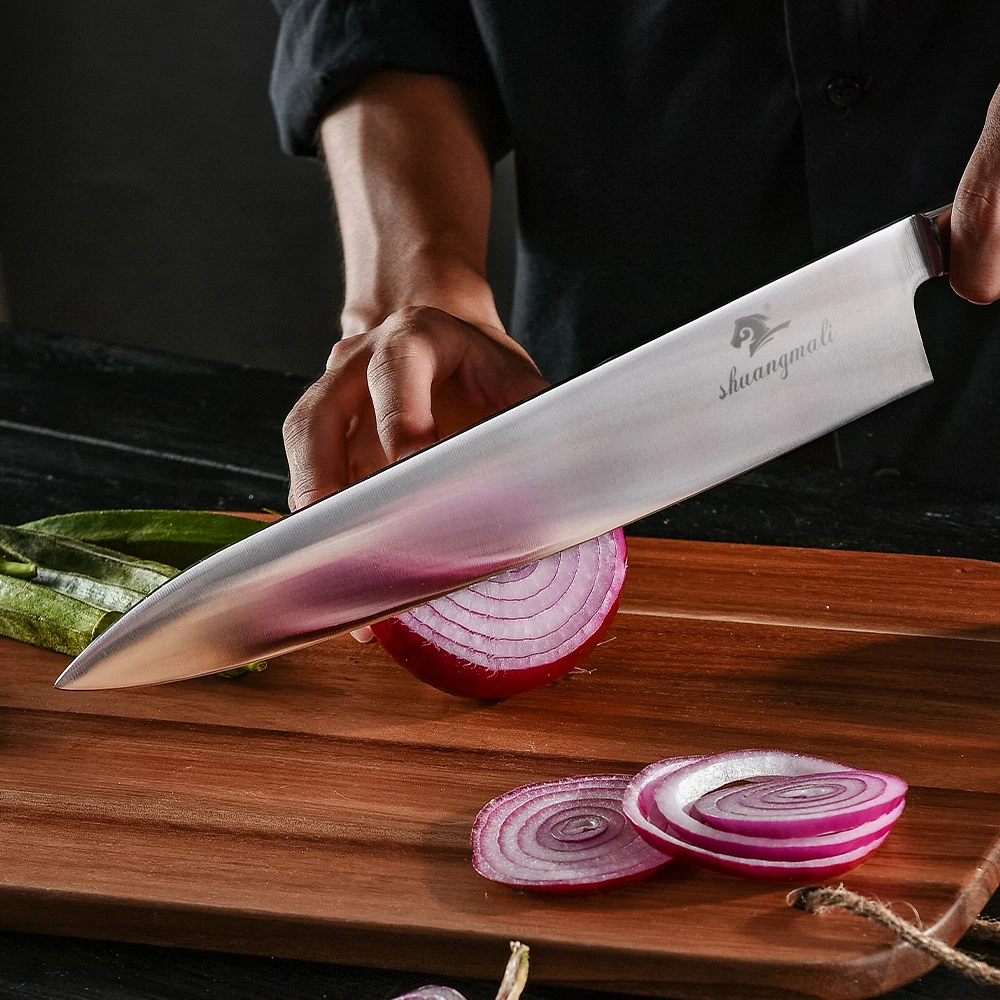History of German Kitchen Knives
Germany boasts a rich tradition in knife crafting, dating back centuries. This legacy of quality and precision has elevated German kitchen knives to a revered status among chefs and home cooks alike.

Evolution of Knife Making in Germany
Knife making in Germany evolved over time, beginning with artisan blacksmiths. They applied their skills to craft blades that were both functional and durable. Innovations in steel processing and handle design contributed to the advancement of this craft. Over the years, German blades have gained a reputation for their exceptional sharpness and resilience. These developments were instrumental in shaping the modern kitchen knives we see today from Germany.
Iconic German Knife Brands
Certain brands have become symbols of German knife-making excellence. Names like Wüsthof and Zwilling J.A. Henckels stand out. These companies embody the high standards of German kitchen knives through their commitment to quality materials and meticulous manufacturing processes. Their knives are not only reliable kitchen tools but also pieces of culinary history that reflect generations of craftsmanship.

Characteristics of German Kitchen Knives
German kitchen knives are renowned for their outstanding quality and performance. This high-standing reputation stems from distinctive features that set these knives apart from others.
Materials and Craftsmanship
The materials used to make German kitchen knives contribute significantly to their robustness and longevity. Most of these knives feature high-carbon stainless steel, which effectively combines hardness with rust resistance. This material ensures the knife retains sharpness longer while minimizing maintenance. Craftsmanship comes into play with the meticulous process each knife undergoes. Skilled artisans meticulously forge, harden, and temper the steel, ensuring each blade meets stringent quality standards. The handles are also ergonomically designed using high-quality materials like wood, plastic, or composite, providing comfort and safe handling during prolonged use.
Blade Design and Edge Angles
Blade design is crucial in the functionality of German kitchen knives. Typically, these knives have a broad and slightly curved blade that facilitates a rocking motion, ideal for chopping herbs or vegetables. The edge angles of German knives are usually set to about 20 degrees. This angle strikes a balance between sharp edge retention and overall blade strength. A well-balanced blade design allows for versatility in various cutting tasks, making German knives suitable for both professional chefs and home cooks looking for efficiency and precision in their kitchen tools.
Types of German Kitchen Knives
German kitchen knives come in various shapes and sizes, each designed for specific tasks. Knowing these types is essential for any chef or home cook looking to make informed decisions for their culinary needs.
Chef’s Knives
Chef’s knives are arguably the most versatile knives in any kitchen. Typically measuring between 6 to 12 inches, these knives have a broad blade that tapers to a sharp point. Ideal for tasks such as slicing, dicing, and mincing, German chef’s knives are a staple due to their balanced weight and robust construction.
Paring Knives
Paring knives are small with a blade length of about 3 to 4 inches. They are perfect for peeling, trimming, and other precision tasks. The agile size of German paring knives allows for intricate work with fruits and vegetables, making them an essential tool for detailed prep work.
Bread Knives
Bread knives stand out with their serrated edge, designed to cut through crusty bread loaves without crushing the soft interior. German bread knives typically feature a long blade, helping to create clean slices with minimal effort, whether sawing through a baguette or a hearty rye.
Utility Knives
Utility knives are a mid-sized option, often considered a hybrid between a chef’s knife and a paring knife. They usually range from 4 to 7 inches in length. These knives are great for miscellaneous tasks where a chef’s knife may be too large and a paring knife too small. German utility knives provide versatility and are well-suited for everyday cutting tasks, whether it’s slicing meats or chopping vegetables.
Selecting the right knife from these types can greatly enhance kitchen efficiency and precision. As part of their culinary toolkit, chefs and home cooks alike rely on these German knife types to tackle a wide range of food prep tasks.
How to Choose the Right German Knife
Choosing the right German kitchen knife can feel overwhelming. But, with a couple of key factors in mind, you can make a selection that suits your culinary style and needs.
Knife Balance and Handling
A well-balanced knife ensures safety and comfort during use. Test the knife by gripping it – the weight should feel even from blade to handle. For proper handling, the knife should sit comfortably in your hand, its handle providing a secure grip without strain. Consider the texture, shape, and length of the handle as these contribute to overall control.

Knife Size and Purpose
Size matters when it comes to function. Chef’s knives are multi-purpose but may feel too large for some. Paring knives are for precision but not suited to heavy chopping. Consider what you cook most often. If you’re a bread lover, a good serrated bread knife is essential. For general prep, a utility knife’s versatility might be the perfect fit. Match the knife size to the task at hand for the best experience in the kitchen.
Caring for Your German Kitchen Knives
To keep your German kitchen knives in top condition, proper care is essential. Correct cleaning and storage, plus regular sharpening, will extend the life of your knives and maintain their performance. Here’s how to care for these fine tools.
Proper Cleaning and Storage
After each use, hand wash your knives with mild soap and warm water. Dry them immediately to prevent rust or damage to the handle. Dishwashers are a no-go for high-quality knives; they can dull the blade and damage handles.
For storage, use a knife block, magnetic strip, or blade guards. These options protect the blade’s edge and prevent accidents. Avoid throwing knives into a drawer, as this can lead to nicks and dull edges.
Sharpening Techniques
Sharpening your German knives requires a honing rod or a whetstone. Use a honing rod regularly to maintain the knife’s edge. For a sharper edge, use a whetstone every few months, following the manufacturer’s angle guide. Slow, consistent strokes on the whetstone will help keep your knife’s edge sharp and ready for use.
German Knives Vs. Other Culinary Knives
When exploring the world of high-quality culinary knives, German knives consistently stand out. However, comparing them to other notable varieties, like Japanese knives, helps highlight their unique attributes and advantages.
Comparing German Knives to Japanese Knives
German and Japanese kitchen knives both offer exceptional quality, but their design philosophies differ. German knives are known for their robustness and versatility. They usually feature a heavier and thicker blade which makes them ideal for tough jobs like cutting thick meats or hard vegetables. Japanese knives, in contrast, are often lighter and have thinner blades, excelling in precision tasks such as slicing fish or chopping vegetables finely.
The edge angle also plays a significant role; German knives typically have a 20-degree angle, making them durable and less prone to chipping. Japanese knives frequently come with sharper 15-degree angles, offering unparalleled sharpness ideal for delicate cutting tasks but requiring more frequent sharpening.
Material-wise, German knives predominantly use high-carbon stainless steel, emphasizing strength and maintenance ease. Japanese knives often use high-carbon steel which can maintain a sharper edge but is more susceptible to rust and requires careful handling.
Advantages of German Knives in the Kitchen
German kitchen knives are exceptionally advantageous for professional chefs and home cooking enthusiasts. Their durability and robust build allow them to withstand heavy use, making them a reliable tool in any kitchen. The balanced weight helps in performing a variety of cutting techniques comfortably and safely.
Additionally, the ergonomic designs of the handles ensure that they can be used for prolonged periods without discomfort. The versatility offered by these knives means that one knife can perform multiple tasks, reducing the need for numerous specialty knives.
Finally, the ease of maintenance, from cleaning to sharpening, ensures that German knives can last a lifetime if properly cared for, making them a worthwhile investment for any serious cook.
Where to Buy Quality German Kitchen Knives
When looking to buy quality German kitchen knives, it’s important to consider where you shop. Below are key factors to guide you in making the right purchase.
Factors to Consider When Purchasing
To ensure you get the best value for your investment in German kitchen knives, weigh these buying factors:
- Authenticity: Look for retailers that offer genuine German-made knives.
- Selection: Choose shops that provide a wide range of knives.
- Price: Compare prices across different sellers to find competitive deals.
- Customer Service: Good retailers offer help and advice on choosing the right knife.
- Warranty: Check for a solid manufacturer’s warranty for long-term assurance.
Visit specialty stores, reputable online marketplaces, or directly from manufacturers’ websites to find these knives.
Recommendations for Beginners and Professionals
If you’re starting or need to replace or upgrade your kitchen knives, here’s a quick guide:
- Beginners: Start with a multi-purpose chef’s knife and a paring knife.
- Professionals: Invest in a complete set that includes utility and bread knives.
- Budget-Conscious: Look for value sets from trusted brands.
Remember to handle your chosen knives before buying. This ensures they feel right and meet your needs for balance and handling. For detailed cutting work, consider knives with smaller edge angles. For durable, heavy-duty use, go for those with wider angles.
In conclusion, choosing the right store and considering these factors will help you find a German kitchen knife that will serve you well in the culinary tasks ahead.

